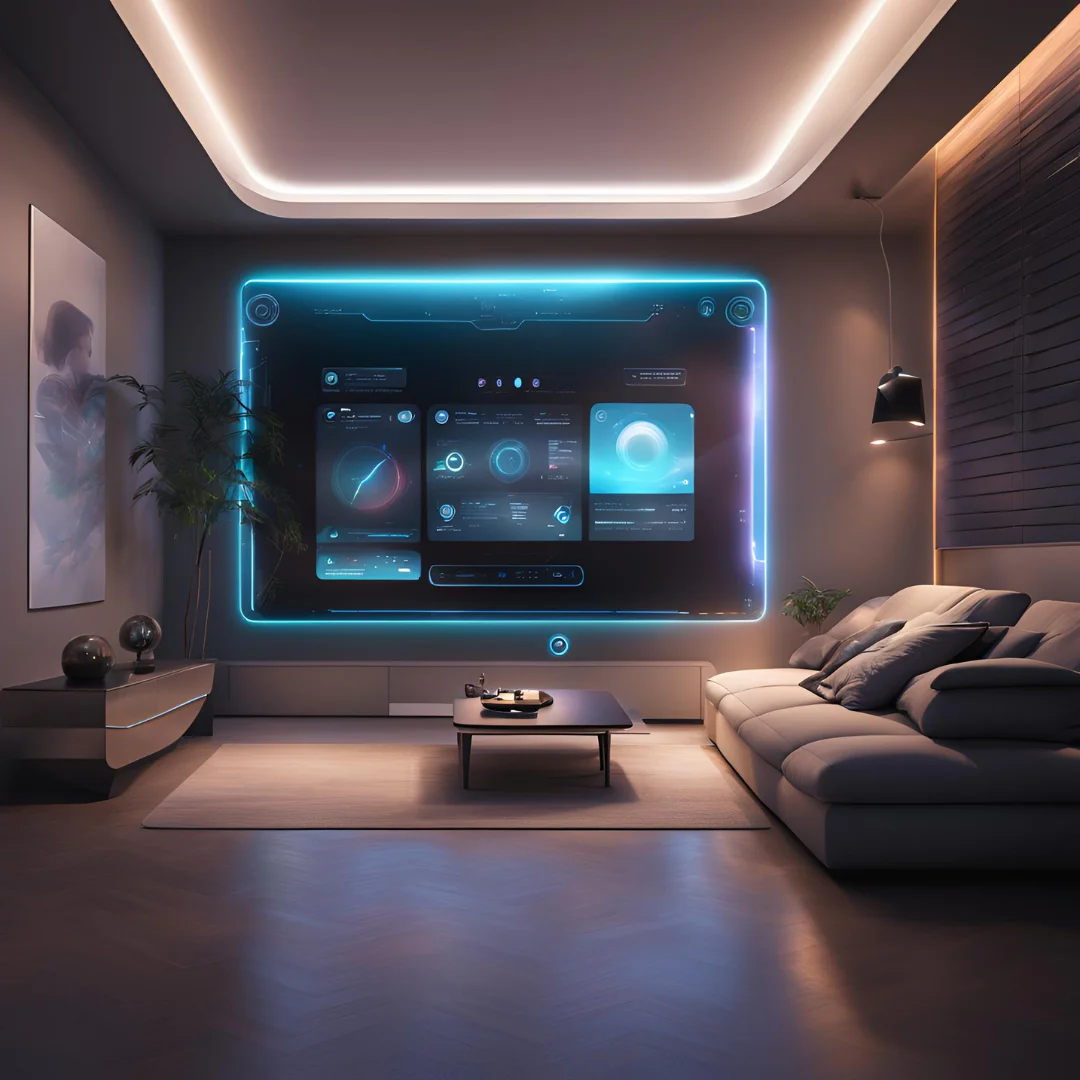Over the past few decades, voice-activated technology—also known as speech recognition or voice recognition technology—has undergone substantial evolution. Voice-activated technology has evolved from its simple beginnings as a basic tool for speech transcription to its current position as a key component of smart gadgets and virtual assistants, becoming an indispensable part of our everyday life. This blog will examine voice-activated technology's origins, advancement, and effects in addition to their uses now, difficulties they face, and potential future developments.
The Evolution of Voice-Activated Technology
Early Beginnings: From Concept to Reality
The idea of a machine that could comprehend and react to human speech was originally envisaged in the middle of the 20th century, which is when voice-activated technology initially came into being. However, due to the limited processing power and antiquated methods available at the time, the early attempts to create such technology were crude and faced considerable obstacles.
The "Audrey" system, the first voice recognition system, was created by Bell Laboratories in the 1950s. Audrey had made the initial stride toward practical speech recognition when she was able to identify numbers spoken by a single voice. Even with its drawbacks, Audrey's effort set the stage for other developments in the area.
The 1970s and 1980s: Advancements in Research
Significant progress in voice recognition technology was made in the 1970s and 1980s as a result of increased funding for research and the creation of increasingly complex algorithms. The goal of the DARPA Speech Understanding Research (SUR) initiative, which was funded by the US Department of Defense during this time, was to develop systems that could comprehend and react to continuous speech.
The invention of the Hidden Markov Model (HMM) algorithm, which served as the basis for numerous voice recognition systems, was one of this era's most noteworthy accomplishments. By modeling the statistical characteristics of speech, computers are now better able to recognize spoken words thanks to HMMs.
The 1990s: Commercialization and Widespread Adoption
Voice-activated technology underwent a major change in the 1990s as it started to make the transition from research labs to commercial applications. Companies including IBM, Dragon Systems, and Philips created commercial voice recognition software that could be used on personal computers as a result of the development of more powerful computers and better algorithms.
When Dragon NaturallySpeaking was made commercially available in 1997, it was one of the first voice recognition products to become widely used. For professionals who needed hands-free typing and those with impairments, it was an invaluable tool because it allowed users to dictate text onto a computer with a fair amount of precision.
The 2000s: The Rise of Voice Assistants
Voice assistants, a brand-new class of voice-activated technology, became popular in the early 2000s and completely changed how people interacted with computers. One of the first voice assistants to become well known was Apple's Siri, which debuted in 2011 with the iPhone 4S. Siri's capacity to comprehend natural language inquiries and carry out operations like as message sending, reminder setting, and question answering paved the way for the widespread adoption of voice-activated technologies in consumer electronics.
Other digital behemoths swiftly joined the market with their own voice assistants after Siri's breakthrough. While Amazon debuted Alexa in 2014 and put her into its Echo smart speakers, Google unveiled Google Now in 2012 and Google Assistant in 2016. The addition of Samsung's Bixby and Microsoft's Cortana to the voice assistant ecosystem increased the appeal of speech-activated technology.
How Voice-Activated Technology Works
To analyze and understand spoken language, voice-activated technology combines hardware and software elements. The procedure can be divided into multiple crucial steps:
1. Speech Input
Voice-activated technology starts by using a microphone to record the user's speech. High-end microphones on contemporary gadgets, such smartphones, smart speakers, and voice-activated assistants, are made to record audio clearly even in busy settings.
2. Speech Recognition
After speech is recorded, it is transformed into a digital signal so the gadget can process it. Speech recognition software then breaks down the audio into smaller components, such as phonemes, by analyzing the digital signal (the basic units of sound in a language).
3. Natural Language Processing (NLP)
The system use natural language processing (NLP) algorithms to comprehend the meaning and context of the spoken words after identifying each individual word in the speech. In order to enable the system to correctly interpret commands and requests, natural language processing (NLP) analyzes the syntax, semantics, and intent of the user's speech.
4. Response Generation
The system produces a suitable response as soon as it comprehends the user's goal. This could be a specific activity, such playing music, setting an alarm, or giving forth information. When speaking with voice assistants, the response is frequently given in the form of synthesized speech, which lends the exchange a more conversational and natural feel.
5. Continuous Learning and Adaptation
Machine learning algorithms are a feature of contemporary voice-activated systems that enable them to get better over time. These systems may adjust to each user's unique speech patterns, preferences, and habits by examining user interactions and feedback. This improves accuracy and responsiveness.
Applications of Voice-Activated Technology
Voice-activated technology is revolutionizing the way people connect with devices, access information, and complete tasks. Its applications span multiple industries. Among the most noteworthy applications are the following:
1. Virtual Assistants
The voice-activated technology that powers Siri, Alexa, Google Assistant, and Cortana is most commonly associated with virtual assistants. These helpers are capable of doing a lot of different things, such as sending messages, scheduling appointments, managing smart home appliances, updating weather reports, and responding to general inquiries.
2. Smart Home Automation
spoken-activated technology, which enables spoken commands to manage a variety of home environment characteristics, has emerged as a crucial component of smart home automation. For instance, by speaking to their smart home gadgets, users may manage entertainment systems, lock doors, change the thermostat, and turn on or off lights.
3. Accessibility and Assistive Technology
Voice-activated technology has changed the game for people with impairments by giving them more accessibility and independence. For instance, speech-activated gadgets make it easier for people with vision impairments to communicate with technology, and voice recognition software can help people with mobility limitations type and navigate computers.
4. Automotive Industry
Additionally, voice-activated technology has entered the automotive sector, where it is applied to improve safety and the driving experience. Voice-activated infotainment systems are common in current cars, enabling drivers to make phone calls, change settings, and operate navigation without taking their hands off the wheel.
5. Healthcare
Voice-activated technology is being used in the healthcare industry to improve patient care, expedite administrative operations, and increase record accuracy. Doctors can spend less time on paperwork by using voice recognition software, for instance, to transcribe patient notes and update electronic health records.
6. Customer Service
Virtual client assistants and interactive voice response (IVR) systems are two customer care applications that are using speech-activated technologies more and more. These systems can help with duties like bill payment, information retrieval, and handling routine questions.
Conclusion
Since its inception, voice-activated technology has advanced significantly, going from a specialized research project to an integral aspect of contemporary life. Numerous industries, including healthcare, automotive, customer service, and home automation, have used it. Technology will surely have a major influence on how human-computer interaction develops in the future, improving the efficiency, personalization, and intuitiveness of our interactions with it.




